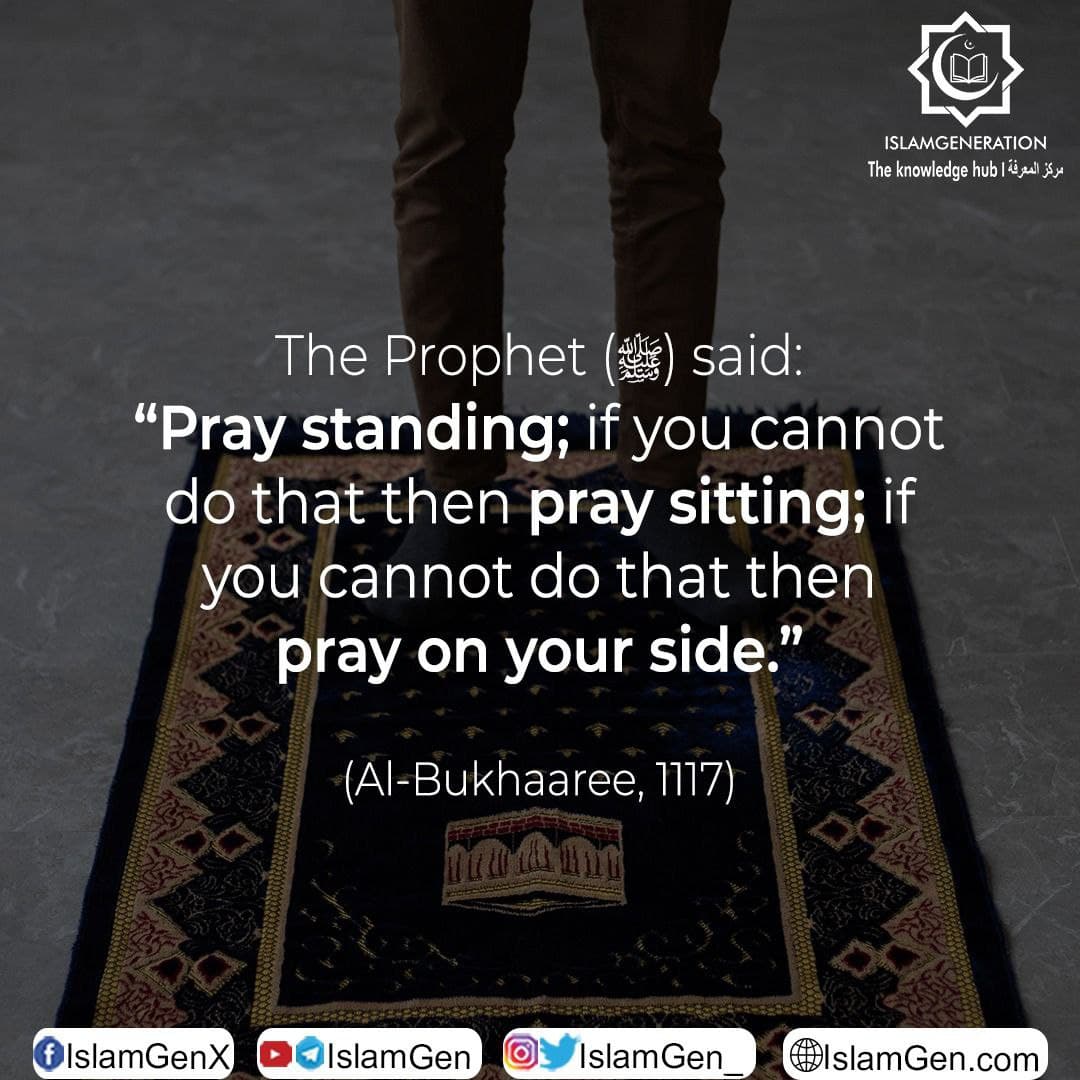﷽
EPISODE 1️⃣: How To Pray Sitting or Lying When Needed
A Muslim is to pray to the best of his ability, the best he can, due to the statement of the Prophet (ﷺ), “Pray standing; if you cannot do that then pray sitting; if you cannot do that then pray on your side.”
(Al-Bukhaaree, 1117)
This confirms that standing (in the prayer) is obligatory and is not waived except when one is unable to do it.
How to pray while sitting
If he is able to stand and sit, but cannot bow or prostrate, then he motions with his head for the bowing while he stands, and he motions with his head for the prostration while he sits.
If he is able to sit, but cannot stand, then he performs the initial takbeerah, the recitation of Al-Faatihah and what is easy of the Quran to recite (while sitting). He motions with his head for the rukoo’ (bowing) while he sits. He prostrates on the ground if he is able. If not, then he motions with his head for the prostration while sitting, making his nodding [or bending over] lower for prostration than for bowing
When praying seated, it is better and more complete to sit on the floor if one is able. If not, then he may sit in a chair, and he does everything a person would do sitting on the floor.
The chair is to be lined up along with the row, and it should be a small chair whenever possible, so it does not take a large amount of space and encroach upon the space of those next to, behind, and in front of him.
He should not pray directly behind the imaam, to leave that place for healthy people who could take his place when needed.
How to pray while lying down
The one who has no choice but to pray lying down may pray on his side, and if he is not able to do that, then he may pray lying on his back and gesture with his head for bowing and prostration. If he is not able to do that, then he should pray intending those movements in his heart, and he should recite the words of dhikr verbally.
The same applies to the tashahhud and takbeer. If he is able to raise his hands (when saying takbeer) and to move his finger (when reciting the tashahhud), then he must do that, otherwise it is sufficient to say the words.
The Prophet (ﷺ) said: “… if you cannot do that then pray on your side.” He did not state which side it should be, so he has the choice between lying on his right side or his left side.
The best is for him to do whatever is easiest for him. If both sides are the same for him, then the right side is better. The Prophet (ﷺ) liked to start with the right in all his affairs.
So in order of preference, the options for the sick person when praying are as follows:
He should pray standing, but if he is not able to do that then he should pray sitting. If he is not able to pray sitting, then he should pray lying on his side, and if he is not able to do that then he should pray lying on his back with his feet towards the qiblah.
O Allaah, assist us to worship you in an excellent manner.
Aameen.
To be continued, In’Sha’Allaah.
==============================
🕋 ISLAM GENERATION DA’WAH GROUP
For more Islamic reminders, check out:
WhatsApp: https://chat.whatsapp.com/Leg4CAimsz0GnnmwmPJHOi
YouTube: https://youtube.com/IslamGen
Telegram: https://t.me/IslamGen
Twitter: https://twitter.com/IslamGen_
Instagram: https://instagram.com/IslamGen_
Facebook: https://facebook.com/IslamGenX


